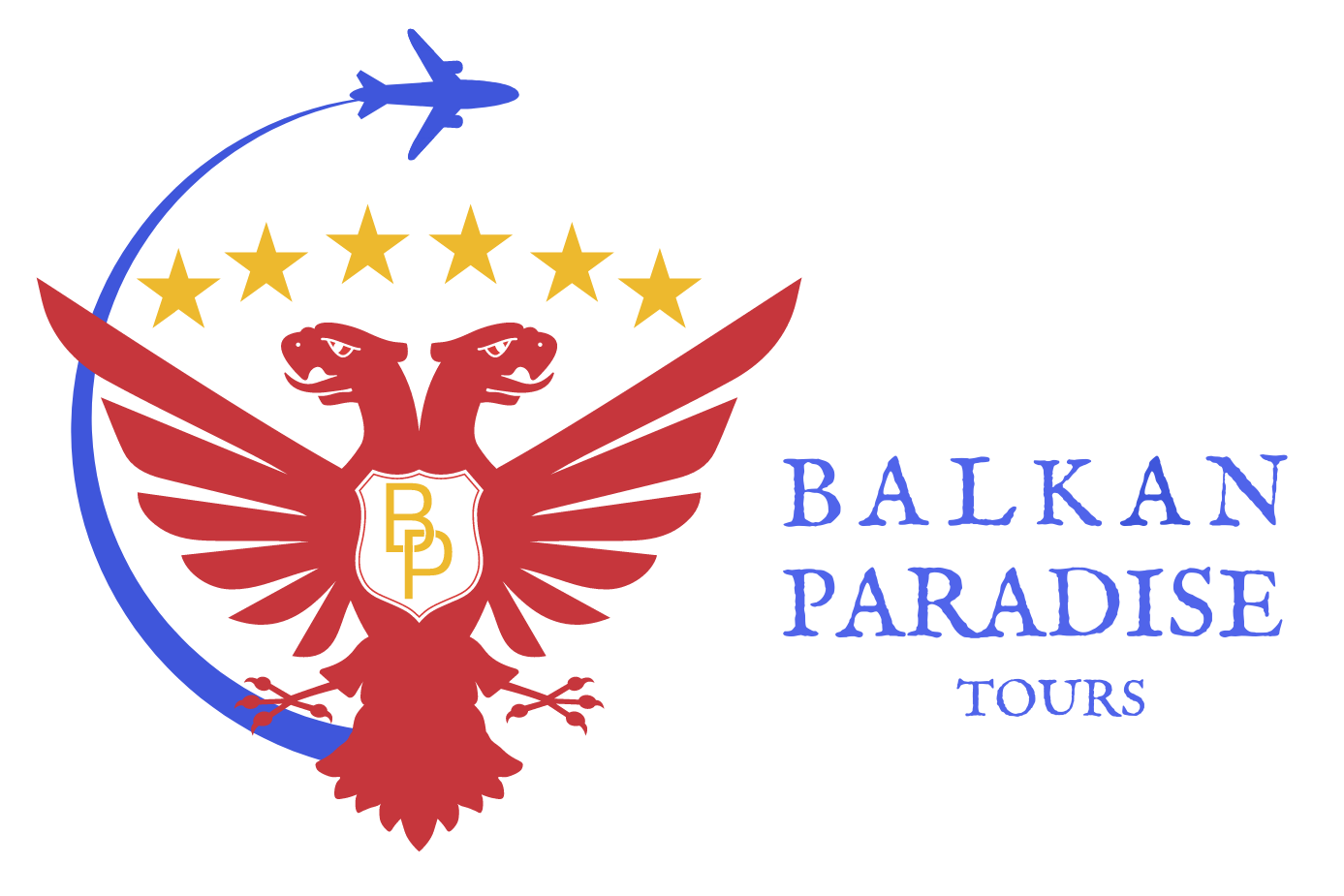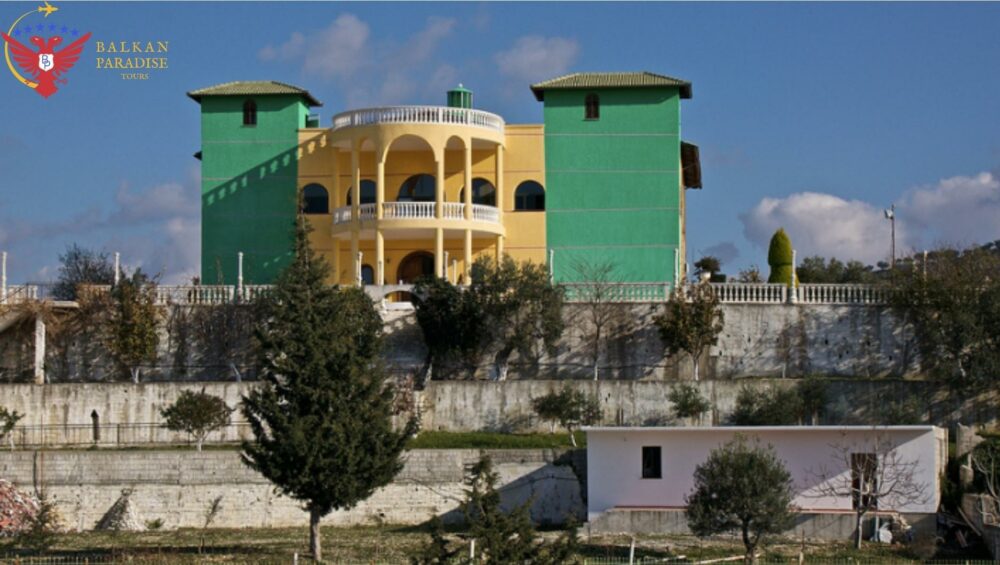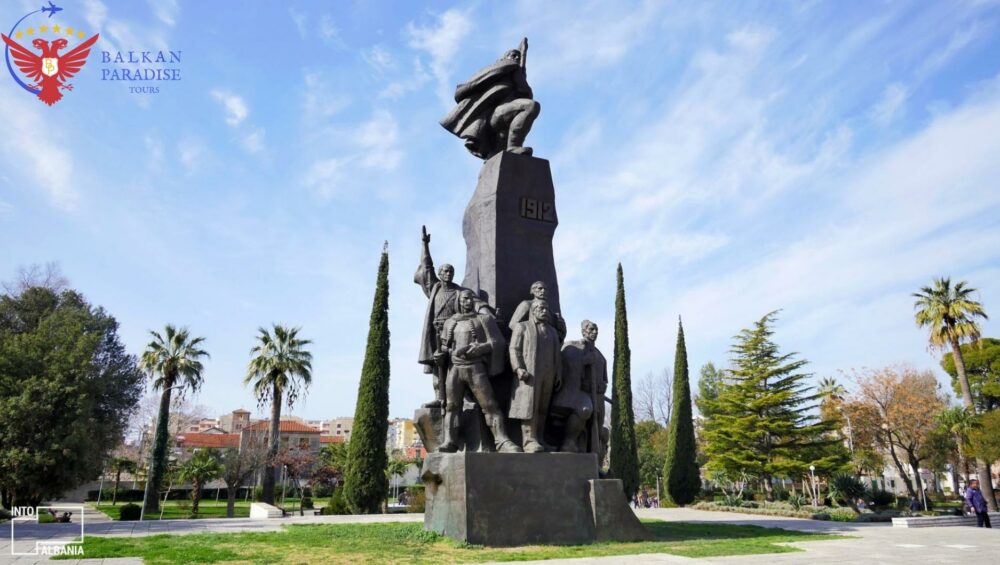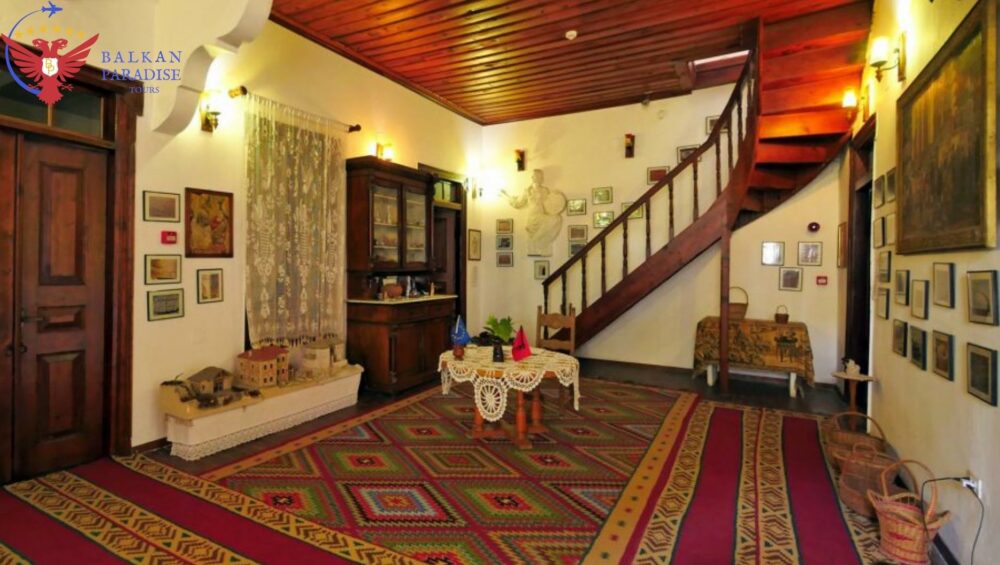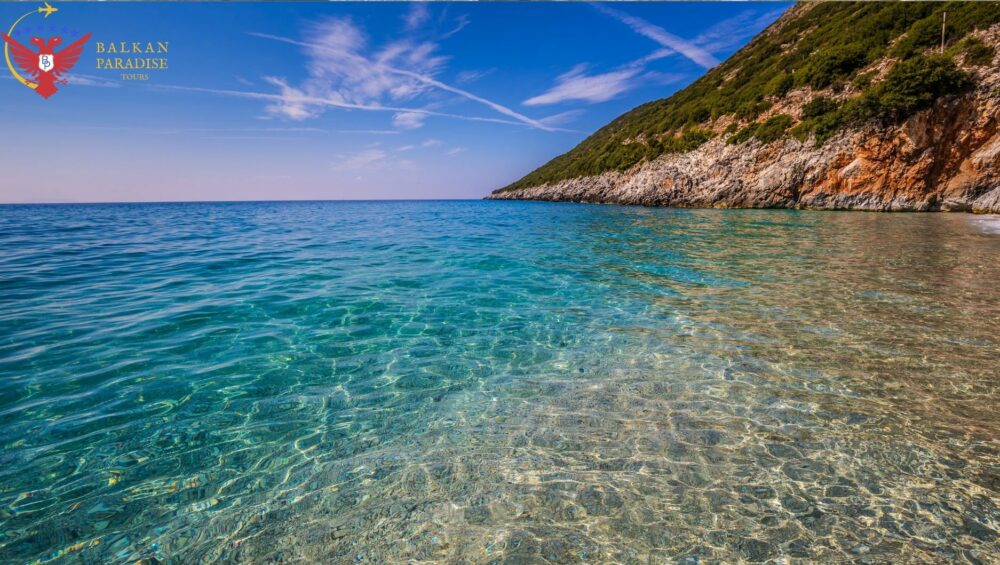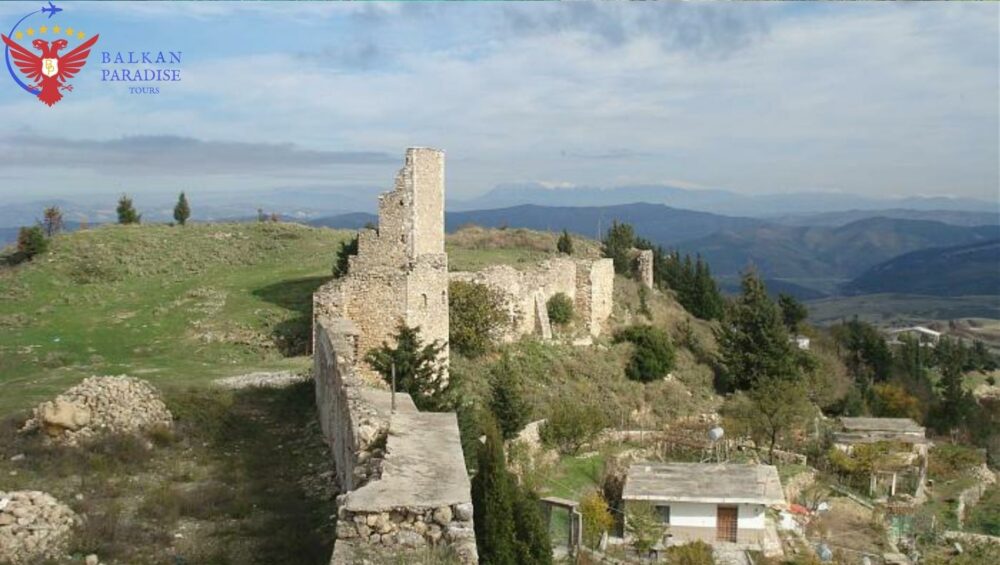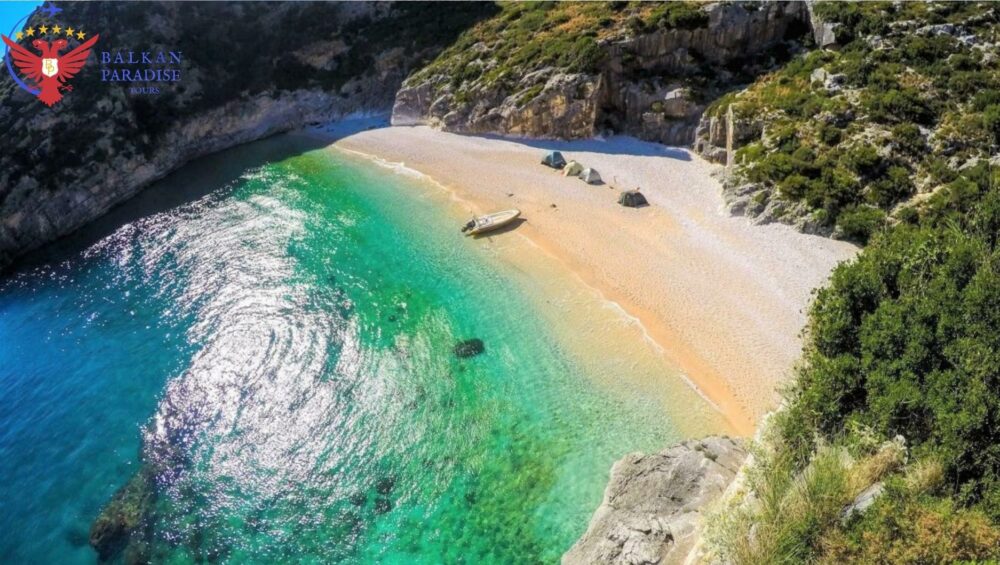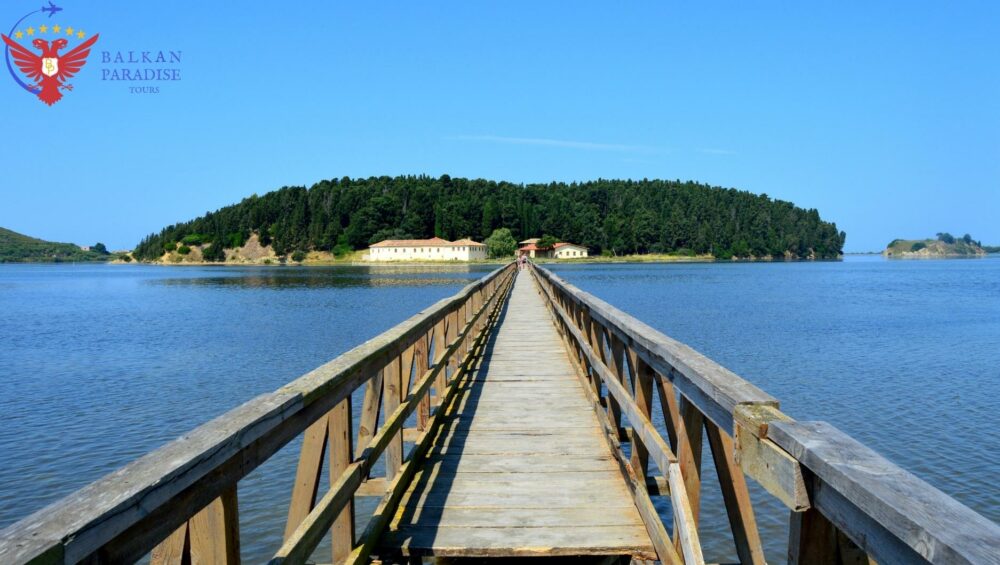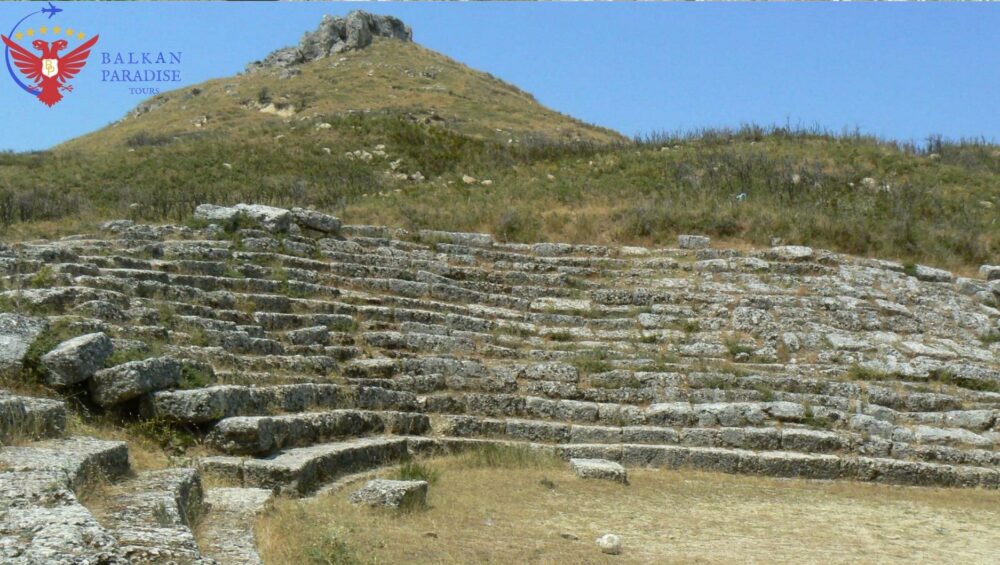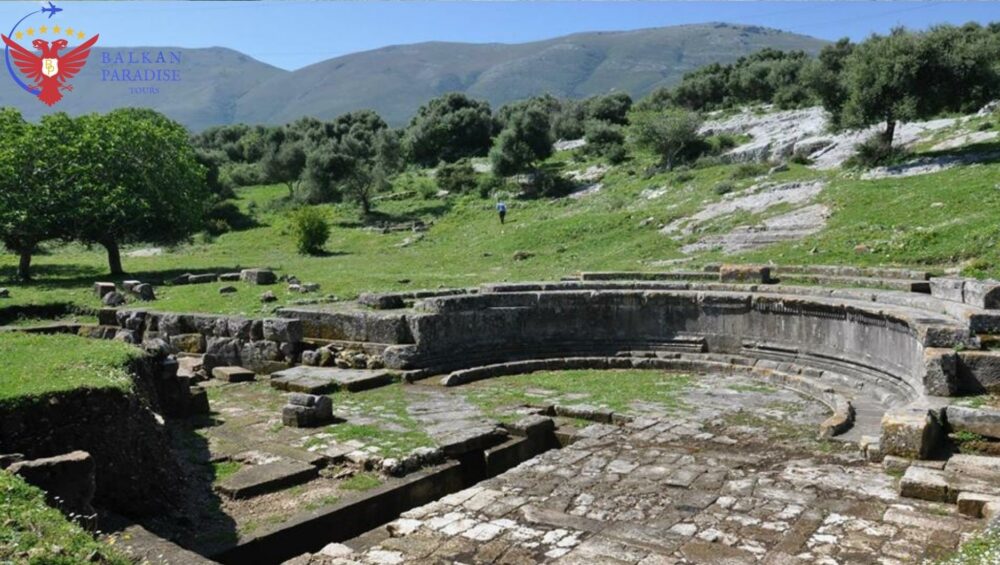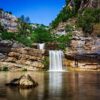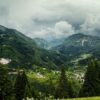- The Museum of Independence
strategically positioned in a location that testifies to its significance, near the port, with a beautiful view of the sea. This modest, two-story house is filled with the weight of history, it was in the famous balcony of this bright yellow, traditional house that Ismail Qemali raised the Albanian flag in 1912. Founded in 1936, this museum is considered to be the first one in Albania before the ’90s.
Bronze busts of the ministers who formed the first government stand visibly in the front yard.
Some of the most historically significant objects on display are personal objects belonging to the ministers, several furniture pieces from the office of the Prime Minister, Ismail Qemali, such as his chair and book shelves, the original flags used in battles leading to the declaration of independence, the actual declaration including all the participants’ signatures.
- Ethnographic Museum of Vlore
Part of a greater, three-museum complex, Vlore’s Ethnographic Museum is located right by the city’s Museum of History. Due to its architectural and cultural value, the beautiful structure that hosts the museum was declared a monument of culture in 1963. Two decades later, in 1982, the museum was established there. Nearly 4 decades old, nowadays the museum contains all that you need to know about the livelihood and lifestyle of the people of Vlore. Ethnographic products used by locals at different points in time, valuable traditional clothing items and daily tools illustrate the evolution of the lifestyle by the Ionian coast.
